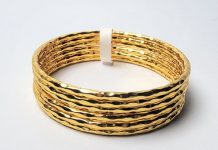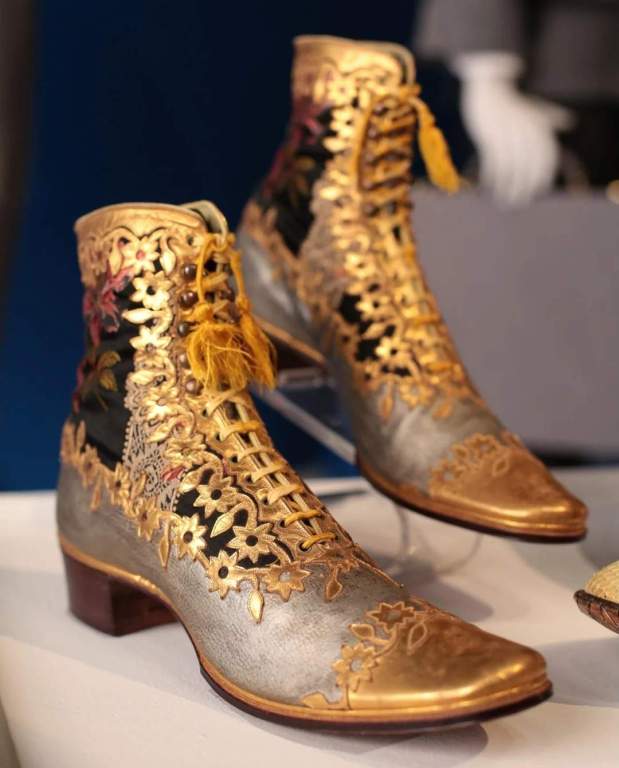There are different types of Jewelry Design Styles & Techniques. Jewelry is a decorative item, such as a necklace, ring, or bracelet, that is made from precious materials, such as gold, silver, or diamonds. Jewelry is often worn for personal adornment or as a symbol of status or wealth.
It can be made from a variety of materials, including metals, gems, and beads, and can be crafted in a range of styles, from traditional and classic to modern and contemporary. There are many different types of jewelry design styles and techniques, each with its own characteristics and features. Here are a few examples:
-
Classic: Classic jewelry design is characterized by timeless, traditional styles and materials, such as gold and diamonds.
-
Art deco: Art deco jewelry is known for its bold, geometric shapes and the use of unusual materials, such as jade and enamel.
-
Art nouveau: Art nouveau jewelry is characterized by organic, flowing lines and the use of natural motifs, such as flowers and vines.
-
Retro: Retro jewelry includes styles from the 1950s and 1960s, such as large, bold pieces made with materials like plastic and costume diamonds.
-
Contemporary: Contemporary jewelry design includes more modern styles and techniques, such as the use of alternative materials, such as resin and recycled metals.
-
Handmade: Handmade jewelry is crafted by hand, using techniques such as hammering, soldering, and enameling.
-
Mass-produced: Mass-produced jewelry is made in large quantities using machine-assisted techniques, such as casting and stamping.
Each type of jewelry design style and technique has its own unique qualities and characteristics, and the right one for you will depend on your personal style and preferences.
Jewelry is often given as a gift for special occasions, such as birthdays, anniversaries, and holidays. It can be worn for everyday use or for special events, such as weddings and parties. Some people collect jewelry as a hobby, and some jewelry has historical or cultural significance.
There are many different types of jewelry, including rings, earrings, necklaces, bracelets, pendants, brooches, and watches. Some jewelry is made using traditional techniques, such as casting and engraving, while other pieces are created using more modern methods, such as laser cutting and 3D Jewelry trends tend to change over time, with certain styles and materials becoming more popular at certain times. Here are a few popular trends in jewelry design at the moment:

Minimalist design: Simple, understated pieces that focus on clean lines and a minimal aesthetic are currently popular.
Mixed metal: Jewelry made with a combination of different metals, such as gold and silver, is trendy.
Natural materials: Jewelry made with natural materials, such as wood, stone, and shells, is popular.
Chunky chains: Chunky, statement-making chains are a trend in both necklaces and bracelets.
Statement earrings: Large, bold earrings that make a statement are a popular choice for both day and evening wear.
Birthstones: Jewelry featuring birthstones or other personal symbols, such as initials or zodiac signs, is popular.
Sustainable materials: Consumers are increasingly looking for jewelry made with sustainable materials, such as recycled gold and lab-grown diamonds.
These are just a few examples of popular trends in jewelry design, and it is likely that new trends will emerge over time
There are several benefits to investing in a personalized jewelry design:
-
Personalization: By working with a designer to create a custom piece of jewelry, you can ensure that the piece is one-of-a-kind and reflects your personal style and preferences.
-
Quality: Custom jewelry is often made with higher quality materials and craftsmanship, as it is made to order and not mass-produced.
-
Durability: Custom jewelry is usually made to last, as it is designed with the specific wearer and their needs in mind.
-
Sentimental value: A custom piece of jewelry can have greater sentimental value, as it is unique and may have special meaning or symbolism.
-
Investment value: Custom jewelry may also have a higher investment value, as it is often made with rare or valuable materials and may be considered a collector’s item.
Overall, investing in a personalized jewelry design can result in a piece of jewelry that is not only beautiful and unique but also of high quality and lasting value.
Jewelry insurance is a type of insurance policy that covers loss, theft, or damage to the jewelry. It is designed to protect the financial investment you have made in your jewelry and to give you peace of mind knowing that your valuable items are protected.
A jewelry insurance policy typically covers the replacement or repair of the jewelry in the event of loss, theft, or damage. It may also cover loss due to disappearance or unexplained disappearance. The policy may have limits on the amount of coverage for individual items and may require that the jewelry be appraised in order to determine its value.
There are several factors that can affect the cost of a jewelry insurance policy, such as the value of the jewelry, the type of coverage, and the deductible. It is important to shop around and compare quotes from different insurance companies in order to find the best coverage at the most affordable price.
It is also a good idea to review your policy periodically to make sure it still meets your needs and to update it as your jewelry collection changes. Providing the most protection and peace of mind for your jewelry and watch insurance needs, Centerstone is the premier jewelry insurance specialist.







